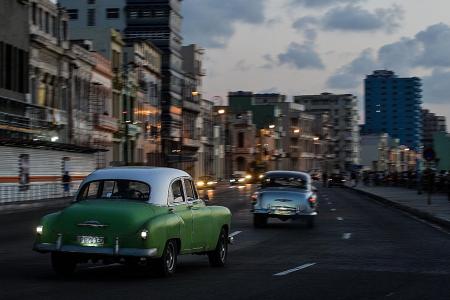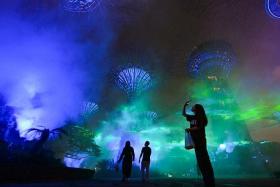Frozen in time, Havana looks to put modern stamp on 500-year history
Cuban capital will celebrate its 500th year in 2019
Havana could be compared to the colourful 1950s classic American cars that fill its roads: An object of desire for historians and tourists alike. To walk through its streets is to take a step back in time.
Run-down homes show signs of salt erosion as waves from the Caribbean Sea batter the city's seawall, while at the day's end the setting sun paints the sky orange.
Despite the visual signs of deterioration, Havana is spiritually alive.
The Cuban capital will celebrate 500 years next year, with an urban restoration plan aiming to give space to modernity while maintaining respect for its vintage character.
"Havana remains frozen in time. The revolution's aims were to look after the country," city historian Eusebio Leal, who is in charge of restoring the historic centre, said.
"Undeniably there has been a cost. When you go around you can see the city's damaged and covered by a veil of decadence.
"There have been no new bridges or wide avenues built in the city, there are no traffic problems and there have been no wide-scale demolitions like in other Latin American cities."
But Mr Leal insists the city has much greater depth than simple aesthetic beauty.
"Havana is not just a romantic ruin, nor a city of classic American cars, or a city of dancers and palm trees. It's a city of intense culture," he said.
"What's surprising is that there isn't enough time to sample the cultural life that extends from ballet festivals to book festivals, from historic cities to jazz.
"And its plastic arts are amongst the most desired in the world by collectors."
The neo-baroque Alicia Alonso Great Theatre of Havana, home to the National Ballet and guarded by marble statues, and the majestic El Capitolio building with its impressive cupola really stand out, as does the music that greets visitors on every street corner.
CLASSIC CARS
Another major attraction is classic cars such as a 1956 Chevrolet Bel Air or a 1952 Dodge Coronet Sierra, lovingly and painstakingly upgraded with modern parts hidden by the retro exterior.
But the landscape has started to change, not least since the country eased open its doors to foreign investment, with luxury stores and "capitalist" brands, restaurants and hotels slipping into historic buildings and sharing public space with damp, old rooftop terraces and colonial-style balconies.
"Over the last decade, Havana has seen an injection of large private initiatives... which has given rise to an architectural renaissance and creation of jobs," said Mr Leal.
Last year, it attracted 4.5 million tourists.
After six decades of US sanctions, the world has been opening up slowly to Cuba, Mr Leal said, adding that there is still much more to come.
What the city needs, he added, is for citizens of the future to drive Havana "into a new economic and social age in which its beauty is preserved without limiting modernisation". - AFP
Get The New Paper on your phone with the free TNP app. Download from the Apple App Store or Google Play Store now




